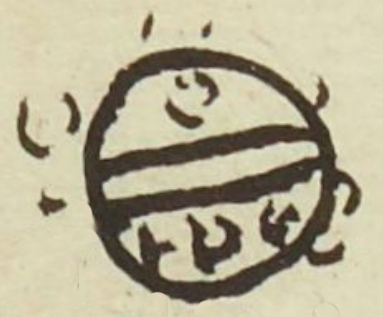Chimalteuh (MH490v)
This black-line drawing of the compound glyph for the personal name Chimalteuh ("Like a Shield") includes a war shield (chimalli) with a traditional design called cuexyo. The squiggles around the outside of the shield provide the reading of dust or dirt (teuhtli). However, the dust is likely a phonetic indicator for the suffix -teuh, in the manner of. If it is not a stretch, the dust might also serve as a phonetic indicator for -teo (from teotl, divinity or deity).
Stephanie Wood
Dust can be carried easily by the wind, making wind (such as dust devils) visible, so, if it is not a phonetic indicator for -teuh (in the manner of), it may add religious meaning connected to Ehecatl, the divine force of wind. The suffix -teuh is also a near homophone for teotl) (deity, divine force).
It is also worth mentioning here that the name Chimalman also seems to mean "Like a Shield."
Stephanie Wood
garcia (?) chimalteuh
Garcia (?) Chimalteuh
Stephanie Wood
1560
José Aguayo-Barragán and Stephanie Wood
cuexyoh, shields, rodelas, armas, polvo

chimal(li), shield, https://nahuatl.wired-humanities.org/content/chimalli
-teuh, in the manner of, https://nahuatl.wired-humanities.org/content/teuh
teuh(tli), dust, https://nahuatl.wired-humanities.org/content/teuhtli
cuexyo, a shield design, https://nahuatl.wired-humanities.org/content/cueyo
A Manera de la Rodela
Stephanie Wood
Matrícula de Huexotzinco, folio 483r, World Digital Library. https://www.loc.gov/resource/gdcwdl.wdl_15282/?sp=60&st=image
This manuscript is hosted by the Library of Congress and the World Digital Library; used here with the Creative Commons, “Attribution-NonCommercial-ShareAlike 3.0 License” (CC-BY-NC-SAq 3.0).






